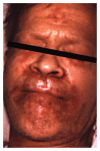Development, Prevention, and Treatment of Alcohol-Induced Organ Injury: The Role of Nutrition
- PMID: 28988580
- PMCID: PMC5513692
Development, Prevention, and Treatment of Alcohol-Induced Organ Injury: The Role of Nutrition
Abstract
Alcohol and nutrition have the potential to interact at multiple levels. For example, heavy alcohol consumption can interfere with normal nutrition, resulting in overall malnutrition or in deficiencies of important micronutrients, such as zinc, by reducing their absorption or increasing their loss. Interactions between alcohol consumption and nutrition also can affect epigenetic regulation of gene expression by influencing multiple regulatory mechanisms, including methylation and acetylation of histone proteins and DNA. These effects may contribute to alcohol-related organ or tissue injury. The impact of alcohol-nutrition interactions has been assessed for several organs and tissues, including the intestine, where heavy alcohol use can increase intestinal permeability, and the liver, where the degree of malnutrition can be associated with the severity of liver injury and liver disease. Alcohol-nutrition interactions also play a role in alcohol-related lung injury, brain injury, and immune dysfunction. Therefore, treatment involving nutrient supplementation (e.g., with zinc or S-adenosylmethionine) may help prevent or attenuate some types of alcohol-induced organ damage.
Conflict of interest statement
The authors declare that they have no competing financial interests.
Figures





References
-
- Anstey KJ, Mack HA, Cherbuin N. Alcohol consumption as a risk factor for dementia and cognitive decline: Meta-analysis of prospective studies. American Journal of Geriatric Psychiatry. 2009;17(7):542–555. - PubMed
-
- Antonow DR, McClain C. Nutrition and alcoholism. In: Tarter RE, Van Thiel D, editors. Alcohol and the Brain. New York: Springer; 1985. pp. 81–120.
-
- Barve SS, Kelkar SV, Gobejishvilli L, et al. Mechanisms of alcohol-mediated CD4+ T lymphocyte death: Relevance to HIV and HCV pathogenesis. Frontiers in Bioscience. 2002;7:d1689–d1696. - PubMed
-
- Cabré E, Rodriguez-Iglesias P, Caballeria J, et al. Short- and long-term outcome of severe alcohol-induced hepatitis treated with steroids or enteral nutrition: A multicenter randomized trial. Hepatology. 2000;32(1):36–42. - PubMed
Publication types
MeSH terms
Grants and funding
- R01 AA024102/AA/NIAAA NIH HHS/United States
- R01 AA021434/AA/NIAAA NIH HHS/United States
- P50 AA024337/AA/NIAAA NIH HHS/United States
- R01 AA020265/AA/NIAAA NIH HHS/United States
- R01 AA023681/AA/NIAAA NIH HHS/United States
- R01 AA024405/AA/NIAAA NIH HHS/United States
- R21 AA020849/AA/NIAAA NIH HHS/United States
- P20 GM113226/GM/NIGMS NIH HHS/United States
- U01 AA022489/AA/NIAAA NIH HHS/United States
- U01 AA021901/AA/NIAAA NIH HHS/United States
- U01 AA021893/AA/NIAAA NIH HHS/United States
- R01 AA018869/AA/NIAAA NIH HHS/United States
LinkOut - more resources
Full Text Sources
Other Literature Sources
Medical

